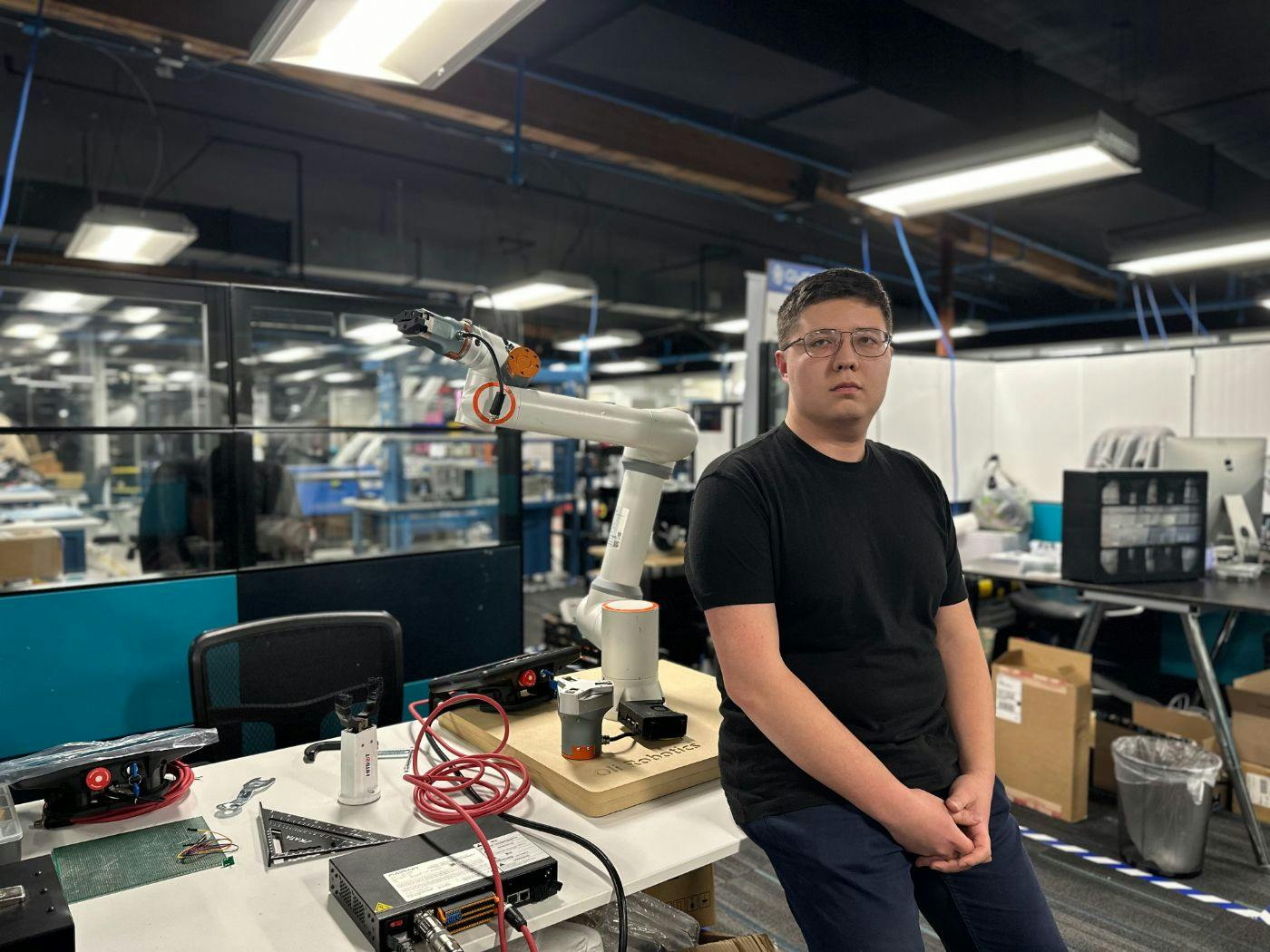
2024-12-3 02:35:57 Author: hackernoon.com(查看原文) 阅读量:1 收藏
The robotics industry is experiencing a profound transformation, fueled by artificial intelligence (AI). Traditional robots, which rely on rigid programming, are evolving into adaptive systems capable of responding to dynamic environments. I spoke with Ismail Karankin, the founder of Oli Robotics, a startup developing reinforcement learning and LLM-based software for industrial robot manipulators. Their mission: to revolutionize workplace safety by delegating hazardous tasks to robots.
How did you start implementing AI in manufacturing? What inspired the creation of Oli Robotics?
I founded Oli Robotics because I saw immense potential at the intersection of AI and robotics. The falling costs of AI technologies, driven by advancements in GPUs and tensor processing units (TPUs), have made robotics more accessible. At the same time, industrial robot prices are dropping, with over 200 brands of robotic manipulators emerging in China over the past five years, intensifying competition.
However, software for these manipulators is still stuck in the past. Most rely on trajectory planning and sensor data. Programming a six-axis manipulator involves calibrating its coordinates, setting angular constraints, and designing motion trajectories—an inflexible process suited only to static environments. Tesla encountered this issue in 2018 when scaling production: minor changes in manufacturing required costly reprogramming of robotic systems.

With AI, robots can adapt in real-time, adjusting their actions based on sensor feedback. Instead of pre-calculating fixed trajectories, our system dynamically recalibrates, improving efficiency and minimizing human intervention. Over time, robots learn to optimize their actions, improving assembly quality without manual reprogramming.
At Oli Robotics, we are creating adaptive software that reacts to environmental changes, enabling robots to adjust their movements on the fly. While this was once cost-prohibitive due to computational demands, the decreasing costs of LLMs and AI infrastructure are turning this vision into reality.
What opportunities does AI bring to manufacturers?
AI is already revolutionizing industries by predicting equipment failures and identifying defects in production lines. But the most significant disruption, I believe, will come from humanoid robots.
Unlike specialized robots, humanoids are designed to interact with existing tools and environments, making them highly versatile. Their human-like form enables them to work in conditions where human skills are typically required. Beyond manufacturing, humanoids can integrate into almost every aspect of human activity.
The cost of humanoid robots is also becoming more accessible. For instance, Unitree’s G1 humanoid robot starts at $20,000, making them a feasible investment for many industries.
You previously founded a drone delivery startup. What lessons did you learn from that venture?
In 2016, I launched Airpost, a startup focused on delivering small parcels using drones. We even made it into Startupbootcamp as one of the top 1,100 projects. The idea was simple: drones could deliver packages up to 4 kg faster by avoiding traffic and eliminating the need for a pilot.
However, we faced significant regulatory hurdles. At the time, drones weighing over 450 grams required registration, and fully autonomous drones were prohibited. For example, a client—a biolab in a smaller town in Eastern Europe—wanted to use drones to quickly transport samples to nearby capitol city. But the legal landscape made such operations impractical.
One amusing yet sobering incident involved a request for pinpoint delivery accuracy within one meter. The caller eventually revealed they intended to use the drones to smuggle phones into a restricted area. Naturally, we declined the offer. After a year of challenges, we decided to close the startup.
Do you see risks in the increasing use of AI technologies?
One common concern is that humanoid robots could replace human jobs. However, the reality has often been the opposite. In the U.S., for example, companies are hiring more people to prepare training data for AI models. The real bottleneck in AI development is the availability of high-quality data.
While the internet seems vast, the amount of suitable training data is finite. Companies are now investing heavily in creating and curating datasets to fuel the next generation of AI models.
What challenges and milestones have you faced so far with Oli Robotics?
The biggest challenge is convincing manufacturers to adopt adaptive robotics. Traditional robots excel in static, predictable environments, but they struggle with variability. With our software, robots learn and improve in real-time, making them suitable for dynamic tasks.
One of our most promising collaborations is with a bakery in San Jose. Employees currently face high risks of burns when loading and unloading bread due to extreme temperatures. Our adaptive robot manipulators are designed to handle such tasks, ensuring both safety and efficiency.
We’ve also been recognized by the Silicon Valley Residency accelerator as one of the top 30 startups from Central Asia. This validation, along with interest from five potential clients, reinforces our belief in the transformative power of our technology.
What do you think is the future of robotics in the workplace?
I believe we’re on the brink of a robotics revolution. Adaptive AI-driven robots will replace humans in hazardous roles, reducing workplace injuries. At the same time, advancements in humanoid robots will expand their use cases, making them invaluable in industries ranging from healthcare to logistics.
Ultimately, AI and robotics aren’t just about replacing humans—they’re about augmenting human capabilities, creating safer workplaces, and enabling industries to operate more efficiently.
如有侵权请联系:admin#unsafe.sh